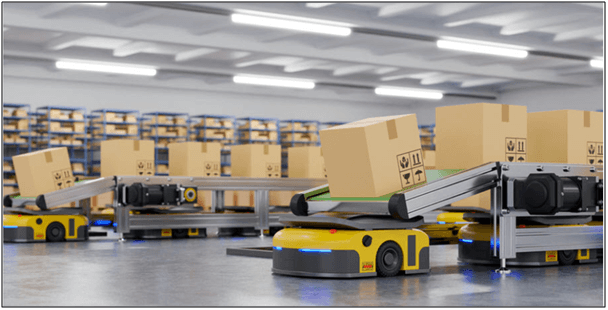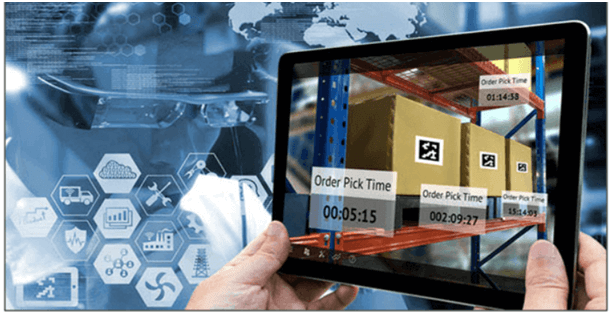As the world moves toward an efficient supply chain, it is inevitable that the conventional warehouses have to adopt automation to improve resource allocation, reduce warehouse keeping discrepancy, and minimise warehouse management cost. Warehouse automation involves the integration of digital technologies into the warehouse management, therefore this report will focus on the essential technologies for warehouse automation. Warehousing is important to every organisation because its main function is to send products to the customers. This helps to increase productivity for the organisation.
Globalisation has enabled organisations dealing with export businesses to access the global market. The increasing business orders are putting pressure on the organisations to push for greater efficiency at their warehouse in order to maximise productivity. Warehouse automation becomes the necessary path of evolution. Automation involves the use of digital technologies to handle labour work, data entry, data analysis, and plan schedules. This will lead to reduced dependence on human labour. This article discusses the essential technologies for warehouse automation, such as radio frequency identification and autonomous robots.
Table of Contents
Radio Frequency Identification Device Technology
Radio Frequency Identification Device (RFID) uses radio waves to identify individual items. Each parcel is given a unique identity stored in its tag which can be scanned with a reader. This allows for the tracking of parcel information such as time of transaction, destination, and origin.
RFID has many advantages. The automatic scanning through radio waves eliminates the need for manual scanning therefore reducing labour cost for the organisation. The reader can detect multiple tags at the same time therefore hasten the scanning process. The tag can also contain more information than the traditional barcode, therefore allowing more flexibility to the organisation in managing the parcels.
However, RFID also comes with some disadvantages. RFID readers are more expensive than barcode readers therefore it will require more capital to adopt this technology. RFID readers may encounter difficulties scanning objects such as metals, resulting in data error. RFID can carry excessive information hence the database may need to be modified to accept various RFID data, resulting in higher database maintenance cost.
Autonomous Robots
Robots can be used in the warehouse to assist labour work such as carrying goods and sorting parcels. In many ways, robots are able to carry out routine and menial work faster and more efficiently than human labour. Robots can assist humans to perform tasks or work independently on their own. One of the advantages of robots is that they do not require rest and off from work as compared to humans, so robots can work round the clock in the warehouse. Robots also do not experience fatigue from doing repetitive work, so it eliminates human error due to work fatigue. Robots also do not come with human work union restrictions, therefore the organisation does not need to worry about work union demands and work condition disputes.

Robots come with disadvantages such as high capital and skilled workers. Robots are expensive to start with so the organisation needs to have high starting capital to adopt the technology. The Organisation also needs to employ skilled workers who are trained to work with or manage robots. Skilled workers can be expensive to hire or take a long time to recruit. Alternatively, the organisation can also train new and existing employees to handle robots, but it is expensive and time-consuming to do so.
Blockchain Technology
The blockchain technology is a good alternative to improve warehouse record keeping. Warehouse processes generate a lot of data, such as record data, inventory audit, costs, stock in and out. It is very difficult to maintain a database record of warehouse processes. Other users such as employees, managers, vendors and suppliers may also face difficulties accessing or updating the database records due to the centralised nature of the organisation database system. Blockchain technology can be used to handle the issues mentioned above.

In blockchain technology, data records are stored in each information block which is linked to the next block. This ensures the traceability of blocks. Each block comes with timestamps so any tampering of block data is recorded. This prevents any unauthorised alteration of data. Passwords are required to access blocks, hence ensuring confidentiality. Blockchain systems work on a peer-to-peer network so it is decentralised and available at all times. However, the blockchain technology comes with disadvantages too. Blockchain records cannot be deleted so the organisation cannot delete its blockchain records which will be permanently available online. The blockchain network can become slow if too many users are accessing the blockchain network at the same time. Some blockchain can consume too much energy which is damaging the environment. The Bitcoin has been widely criticised for consuming too much electricity, tarnishing the global efforts to reduce carbon emission. China, one of the biggest bitcoin miner nations, has recently banned bitcoin mining due to its high energy consumption.
The full content is only visible to SIPMM members
Already a member? Please Login to continue reading.
References
Murali Balasubaramaniam, DLSM. (2021). “Concatenating RF Technology for Integrated Logistics”. Retrieved from SIPMM: https://publication.sipmm.edu.sg/concatenating-rf-technology-integrated-logistics/, accessed 12/09/2021.
Sures a/l Appalanaidoo, DLSM. (2021). “Smart Technologies for Warehouse Operations”. Retrieved from SIPMM: https://publication.sipmm.edu.sg/smart-technologies-warehouse-operations/, accessed 12/09/2021.
Granta. (2017). Advantages and Disadvantages of Robotic Automation. Retrieved from https://www.granta-automation.co.uk/news/advantages-and-disadvantages-of-robotic-automation/, accessed 12/09/2021.
Aidilhaswin Hassan, DLSM. (2021). Smart Technologies for Efficient Warehousing. Retrieved from SIPMM: https://publication.sipmm.edu.sg/smart-technologies-efficient-warehousing/, accessed 12/09/2021.
Jon Huang, Claire o’Neill and Hiroko Tabuchi. (2021). “Bitcoin Uses More Electricity Than Many Countries How Is That Possible?” Retrieved from https://www.nytimes.com/interactive/2021/09/03/climate/bitcoin-carbon-footprint-electricity.html, accessed 12/09/2021.
Cheng Heng Yee, DLSM. (2021). Key Considerations for Effective Warehouse Operations. Retrieved from SIPMM: https://publication.sipmm.edu.sg/key-considerations-effective-warehouse-operations/, accessed 12/09/2021.

